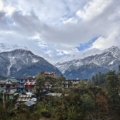Chhath Puja 2025 – Best Places in Bihar & Varanasi to Experience the Sun Worship Festival
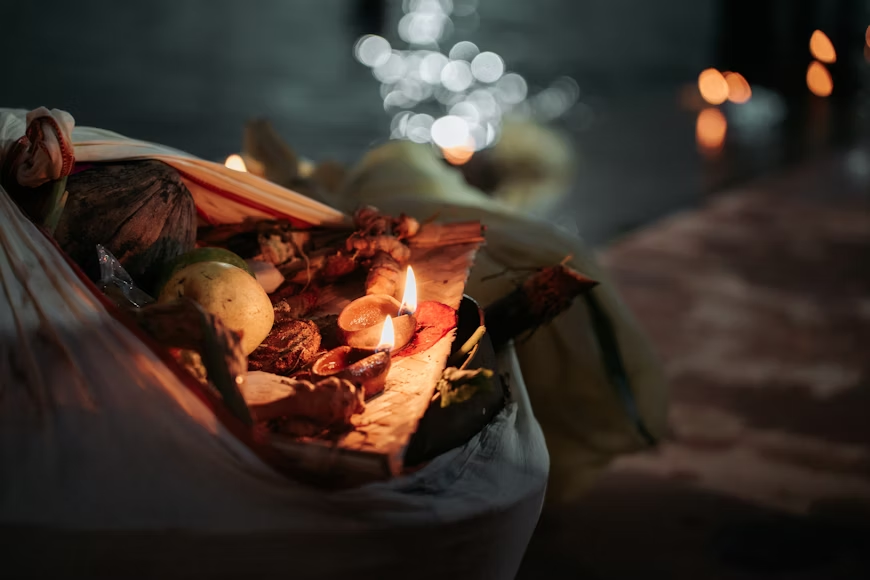
Chhath Puja is a four-day sun-worship festival deeply rooted in the heartlands of Bihar and Uttar Pradesh. In 2025 the Karthik Chhath falls from October 25 to 28. Devotees dedicate this time to Lord Surya (the Sun God) and Chhathi Maiya (his sister or consort), performing austere rites – from holy river baths and strict fasts to offering prasad (offering) at sunrise and sunset. The festival emphasizes gratitude for nature’s bounty, purification and spiritual renewal. In Bihar especially, Chhath transforms riverside cities into beacons of devotion: ghats are cleaned and decorated, diyas and candles blaze into night, and folk hymns fill the air. This guide highlights the best places in Bihar and in Varanasi to experience the Chhath Puja 2025– what makes each spot unique, how to get there, and nearby sights to explore.
In this Blog
Chhath Puja Rituals and Significance
Chhath Puja is one of India’s most disciplined and nature-centric festivals. Its four days encompass rituals of purification, fasting, and offering prayers to the Sun. In 2025, the schedule is as follows:
- Day 1 – Nahay Khay (Oct 25): Devotees begin with a holy bath in a river or pond, symbolically cleansing body and home. They prepare one simple satvik (pure vegetarian) meal – often of lauki, rice and chana dal – to be eaten and stored in an earthen pot. This day is about purification and readiness.
- Day 2 – Kharna/Lohanda (Oct 26): A 36-hour fast starts at sunrise. No food or water is consumed until after sunset. After sundown, the fast is broken with a prasad of jaggery kheer (rice pudding) and roti/banana, which the devotees prepare and share. The rigorous fast underscores self-discipline and devotion
- Day 3 – Sandhya Arghya (Oct 27): At sunset, worshippers gather at riverbanks (often knee-deep in water) to offer arghya (water) to the setting sun. Each family brings a bamboo basket (soop) laden with seasonal fruits, sugarcane, thekua (a special sweet), and sweets. This is the festival’s most spectacular moment: thousands stand together, singing folk hymns as the sun descends.
- Day 4 – Usha Arghya (Oct 28): Before dawn, devotees return to the water’s edge to make a final offering to the rising sun. The fast concludes after sunrise, as families break it together. Usha Arghya symbolizes renewal, gratitude and the cycle of life.
These rituals have profound cultural and spiritual meaning. Chhath honors Surya as the source of life and energy, and Chhathi Maiya as the protector of progeny. The festival transcends caste and class: on the riverbanks all devotees are equals before the sun. Participation demands purity and sacrifice (a nirjala fast without even water), but it also brings communities together in collective worship. In short, Chhath Puja is both thanksgiving to nature and a powerful exercise in faith and communal harmony.
Top Chhath Puja 2025 Destinations in Bihar
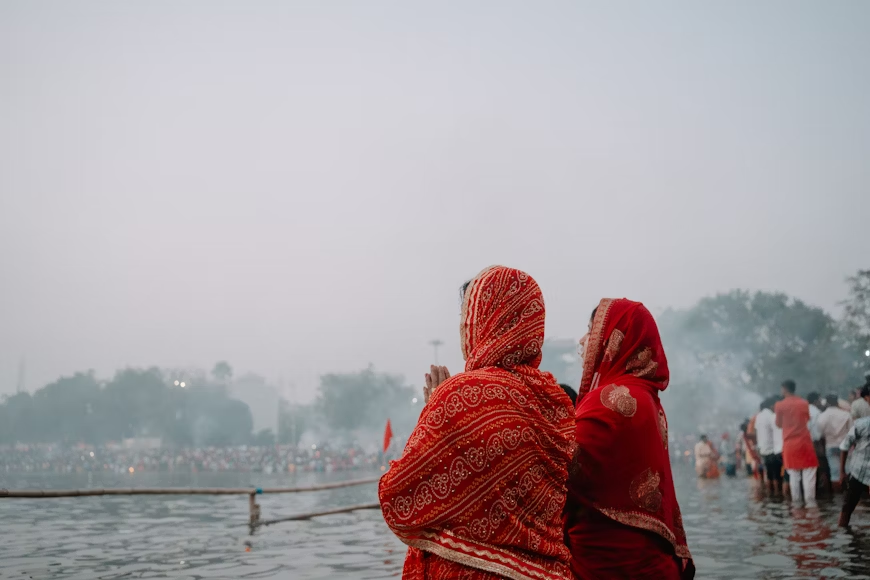
Bihar is often called the cultural epicentre of Chhath. Here are the most celebrated spots to experience Chhath Puja in 2025:
Patna
Patna, the capital city of Bihar, is undoubtedly the biggest Chhath Puja hub. Situated on the south bank of the Ganges, Patna’s many ghats come alive during Chhath. Locals clean and decorate the ghats days in advance, and on Chhath evening the scene is electric with faith and nostalgia. Several ghats are prime spots for rituals in Patna:
- Gandhi Ghat: Famous as the site where Mahatma Gandhi’s ashes were scattered, Gandhi Ghat now hosts night-time Ganga Aartis and sunrise Chhath offerings. Devotees in bright saris stand here to pray as the sun rises, creating a vivid tableau on the river.
- Patna Ghat: One of the oldest ghats, it is steeped in religious tradition. Thousands throng Patna Ghat during Chhath to offer prayers and take holy dips.
- Mahatma Gandhi Setu Ghat: Named for the famous river bridge, this ghat is a picturesque sunset spot. Here, worshippers can watch the sun set behind the blue steel Mahatma Gandhi Setu while performing Sandhya Arghya, as hundreds gather each Chhath
How to reach Patna:
- By Air: Patna is served by Jay Prakash Narayan International Airport. Major airlines fly here from Delhi, Mumbai, Kolkata and other cities. From the airport it’s about 5 km to the riverfront; pre-paid taxis or app cabs can drop visitors near Gandhi or Adalat Ghat in under 15 minutes.
- By Train: Patna Junction and Rajendra Nagar Terminal are busy railheads. Trains from all over India connect here (Patna Junction has routes to Delhi, Kolkata, Chennai, etc.). From the station one can take an auto-rickshaw or taxi to the ghats.
- By Road: National Highway NH22 (formerly NH2) links Patna to cities like Varanasi (approx 250 km) and Lucknow. State-run and private buses regularly ply to Patna from neighboring states. Once in the city, cycle-rickshaws and city buses also reach many ghats.
Nearby Attractions: Patna offers rich heritage sites for culture-minded travelers. The Golghar (a massive 1786 grain silo with a 184-step spiral stairway) and Patna Museum (with ancient artifacts) are must-visits. The Takht Sri Patna Sahib Gurudwara (birthplace of Sikh Guru Gobind Singh) draws pilgrims. History enthusiasts can explore the ruins of ancient Patliputra and Pataliputra Fort, or take day trips from Patna to the famous Buddhist pilgrimage sites of Nalanda (1½ hours away) and Bodh Gaya (2 hours away).
Gaya
Gaya, about 100 km south of Patna, is another major Chhath destination. This historic city on the banks of the Falgu River blends Hindu piety with Buddhist tradition. Chhath here is observed on the Falgu ghats, where “devotees gather along the Falgu River, creating a magical atmosphere filled with chants and offering Hundreds of families stand knee-deep in the Phalgu waters at dawn and dusk to sing folk songs and make offerings. Key ghats in Gaya include Kendui Ghat, Sidhiah Ghat, Pita Maheswar Ghat and Dev Ghat, all of which brim with worshippers during Chhath. During the festival, the skyline of Gaya with its cluster of temple spires and the silhouette of the nearby Vishnupad Temple make for a stunning backdrop to the rituals.
Getting there:
- By Air: Gaya is served by Bodhgaya Airport (LGBI), about 5 km from the city center. It has direct flights to Delhi and Kolkata, and connections to other metros. From there, taxis can reach Gaya or nearby Bodh Gaya in 15–30 minutes.
- By Train: Gaya Junction is a major rail hub on the Delhi–Howrah line. It has trains from Delhi, Kolkata, Mumbai, Chennai, and nearby cities. Trains from Patna to Gaya take about 3–4 hours.
- By Road: NH22 connects Patna to Gaya (about 110 km). Buses and taxis make the journey easily in around 3–4 hours. Gaya is also on NH83 from Ranchi/Jharkhand.
Nearby Attractions: Gaya’s fame extends beyond Chhath. Just south of the city is Bodh Gaya, where Lord Buddha attained enlightenment – home to the UNESCO-listed Mahabodhi Temple (a must-see monument). Within Gaya itself, the Vishnupad Temple (dating to the 4th–5th century) and Gyana Vapi (a sacred well) draw many devotees year-round. Pilgrims performing the Pind Daan rites (ancestral offerings) also visit Gaya, making it one of Hinduism’s most sacred cities.
Bhagalpur
Bhagalpur, Bihar’s third-largest city (on the Ganges 220 km east of Patna), also hosts vibrant Chhath celebrations. Known as the “Silk City” for its famous tussar silk industry, Bhagalpur is blessed with a serene stretch of the Ganges. Its prime Chhath spot is Barani Ghat, where “lakhs of devotees standing in the Ganges” offer prayers to the sun. During Chhath, the ghat is decked with lights and flower garlands, and folk bands often accompany the chants.
Reaching Bhagalpur:
- By Air: Bhagalpur has no major airport. The nearest commercial airports are in Patna (220 km away) or the recently opened Deoghar Airport (Jharkhand, ~200 km). From Patna or Deoghar, one can hire a taxi or take a train.
- By Train: Bhagalpur Railway Station (MGB) is well connected. Trains run from Patna, Kolkata, New Delhi, Mumbai and other cities to Bhagalpur.
- By Road: NH33 and NH31 link Bhagalpur to Patna and other towns. Buses are available from Patna and neighboring regions; driving takes ~5 hours from Patna.
Nearby Attractions: Bhagalpur is rich in history and nature. The ruins of Vikramshila University lie to the north, and the Vikramshila Gangetic Dolphin Sanctuary is home to the rare river dolphin. Devotees often visit the Mandar Parvat (sacred hill with Sun and Shiva temples) a short drive away. The city is also famous for its tasty silk and sweet kalakand. A visit during Chhath can be combined with a boat ride on the Ganges or a trip to the scenic Gulf of Malwa nearby.
Muzaffarpur
Muzaffarpur (75 km north of Patna) is another key Chhath locale. Often called the “Litchi Kingdom” (famous for its shahi litchis), this city lies on the Burhi Gandak River and has multiple smaller rivers and lakes. Every Chhath, local residents flock to these waterways at dawn and dusk.
Getting there:
- By Air: Muzaffarpur has no airport. The nearest is Darbhanga Airport (about 50 km away) with flights from Delhi/Bengaluru, or Patna Airport (75 km). From either, taxis or buses are available to Muzaffarpur.
- By Train: Muzaffarpur Junction is on the main Delhi–Howrah railway line. It is well connected to Patna (1–2 hours by fast train), Kolkata, Lucknow and other cities.
- By Road: Muzaffarpur is on NH22; buses and cars from Patna or other cities take ~2 hours. Local buses and auto-rickshaws serve the city and its outskirts.
Nearby Attractions: Although Chhath is the main draw, Muzaffarpur has cultural sites of interest. The Litchi Gardens and Jubba Sahni Park are pleasant green spots. Ancient temples like Garib Sthan Mandir (one of the oldest Shiva temples in the region) and the Devi Mandir draw devotees of Shiva and Shakti. History buffs might visit the Khudiram Bose Memorial or the Ramchandra Shahi Museum. In short, visitors can enjoy local sights and cuisine (including famous Bihari snacks like litti-chokha and ghugni) alongside the spiritual fervor of Chhath.
Other Notable Bihar Sites
While Patna, Gaya, Bhagalpur and Muzaffarpur are the most prominent, several other Bihar towns celebrate Chhath grandly. For example, Darbhanga (a historic city in north Bihar) is known for its cultural enthusiasm – every year “Chhath is celebrated with much enthusiasm in the city”. Chapra has the famous Ambika Bhawani Temple and sits at the confluence of the Ganges and Gandak; its riverbanks also host large Chhath gatherings. Even more rural regions like Munger, Vaishali or Madhubani light diyas on village ponds and river stretches. Essentially, almost every part of Bihar feels Chhath’s impact – and the more offbeat the spot, the more intimate and local the experience.
Top Chhath Puja 2025 Destinations in Varanasi
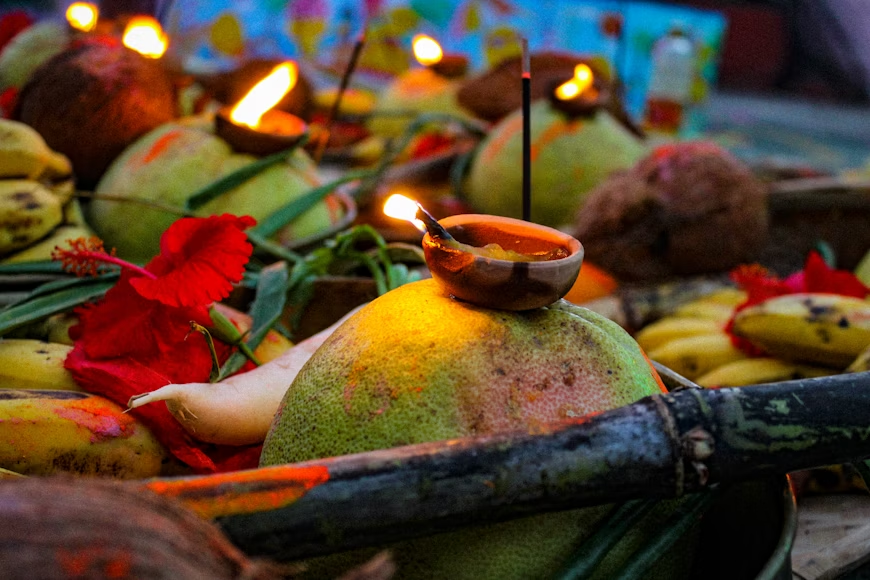
Across the state border in Uttar Pradesh lies Varanasi (Kashi), one of India’s holiest cities. Varanasi’s ghats on the Ganges are famous worldwide for daily rituals, and during Chhath they transform into vibrant centers of worship.
The primary Varanasi ghats for Chhath are Assi Ghat and Dashashwamedh Ghat. At Assi Ghat (near the confluence of Assi and Varuna rivers), devotees gather at sunrise. The ghat’s broad steps and open sky make it ideal for the morning arghya. Dashashwamedh Ghat (in central Varanasi) is famed for its spectacular Ganga Aarti, and during Chhath Puja it hosts large evening congregations. Thousands stand here at sunset, offering lamps and prayers to Surya against the backdrop of Varanasi’s temple-silhouettes. Other ghats such as Rajendranath or Panchganga Ghat also see local participation. In all cases, the atmosphere is “a spectacle of devotion and light”, with oil lamps, flower garlands and candlelit pandals lining the water’s edge.
How to reach Varanasi:
- By Air: Lal Bahadur Shastri International Airport (VNS) serves Varanasi with flights from Delhi, Mumbai, Kolkata, Bengaluru and other cities. The airport is about 25 km from the main ghats; pre-paid taxis or app cabs connect passengers to Assi or Dashashwamedh Ghat in about 45 minutes.
- By Train: Varanasi Junction (Varanasi Cantt) and Varanasi City (Manduadih) are major railheads. Frequent trains link Varanasi with Delhi, Mumbai, Kolkata, Chennai and Lucknow. From the railway station or bus station in the Cantonment area, auto-rickshaws and taxis run regularly to any ghat.
- By Road: National Highway NH19 (the old NH2, part of the Grand Trunk Road) connects Varanasi with Lucknow, Allahabad and Patna. State-run and private buses also link Varanasi with nearby cities. Within town, cycle-rickshaws, auto-rickshaws and tuk-tuks provide easy access to the riverfront.
Nearby Attractions: Varanasi is a treasure trove of spiritual and cultural landmarks. The Kashi Vishwanath Temple (one of Hinduism’s 12 Jyotirlingas) is a short walk from Dashashwamedh Ghat. On the other side of the city, the Assi Temple and numerous smaller shrines line Assi Ghat. For a change of pace, travelers can visit Sarnath (about 10 km away), where Buddha gave his first sermon – the imposing Dhamek Stupa and archaeological museum make for a fascinating half-day trip. The lanes of the old city (Thathari Bazar) offer traditional Banarasi sarees and street food (kachaudi, jalebi). A boat ride on the Ganges at dawn (even outside Chhath days) is an unforgettable cultural experience.
Nearby Festivals and Experiences
Travelers interested in Chhath often combine it with other local cultural sights. For instance, close to Bihar’s Chhath hubs, one can visit:
- Nalanda and Rajgir (near Patna/Gaya): Ancient Buddhist monastic ruins at Nalanda and hot springs/ruins at Rajgir.
- Vaishali (near Patna): A historic Buddhist and Jain site with Ashokan Pillar and excavated Stupa.
- Prayagraj (Allahabad): Though in UP, it is about 200 km from Patna and is famous for its Sangam (Ganga-Yamuna confluence) – it hosts massive Chhath crowds at Anand Bhawan and other ghats.
- Kumbh Mela Sites: If timing aligns (Prayagraj hosts Kumbh in 2025), pilgrims may witness a convergence of festivals.
- Bodh Gaya (as above): One of the world’s great Buddhist pilgrimage centers.
- Nalanda University Museum and Pawapuri (south Bihar): For Jains, Pawapuri’s Jal Mandir is significant (and listed in Bihar tourist guides
In Varanasi, nearby experiences include attending the nightly Ganga Aarti (even before Chhath), visiting the Banaras Hindu University (with its Bharat Kala Bhavan museum), and exploring the Ramnagar Fort across the river. For music and culture buffs, Varanasi’s classical music concerts or the local Besantnagar handicraft and silk-weaving communities offer immersion in local traditions.
Stay by the Ganges for Chhath Puja 2025
The Ganga House

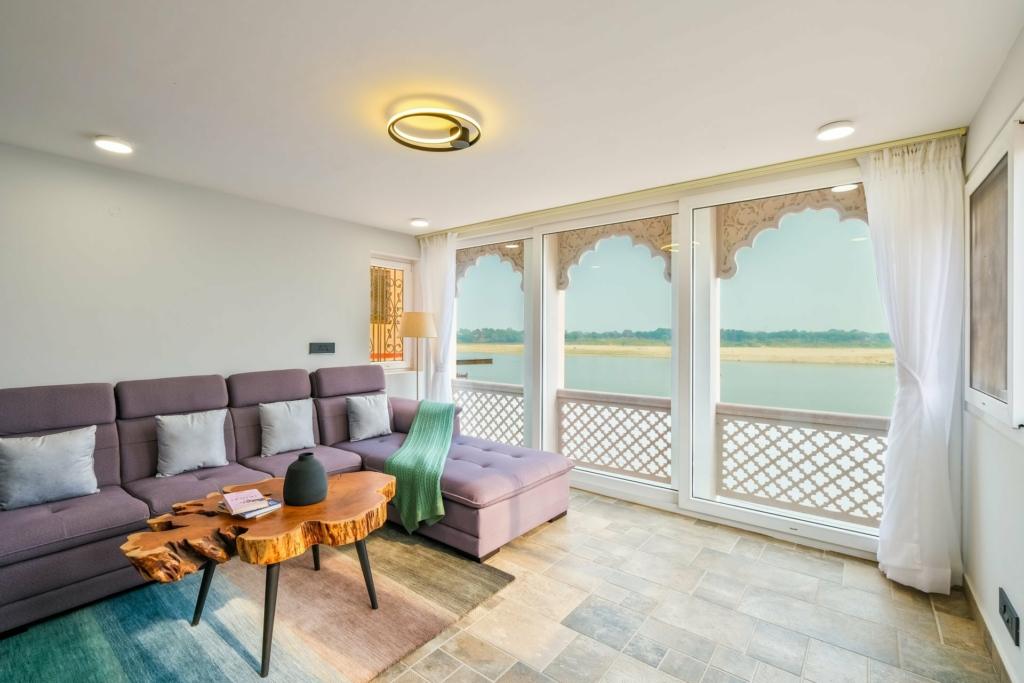
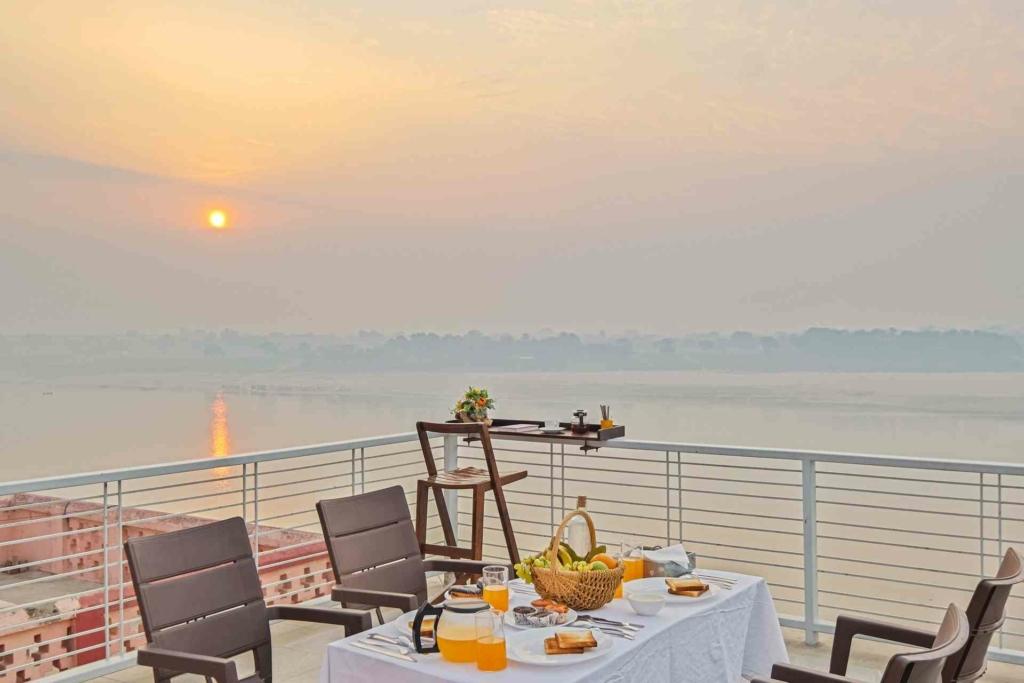
This four-bedroom riverside villa offers a calm, spacious retreat right on the Ganga. It has a river-facing terrace and outdoor seating where guests can soak in sunrise views. Modern amenities include air-conditioning, free Wi-Fi and barbecue facilities, and every room enjoys panoramic river scenes. Crucially for Chhath Puja, Dashashwamedh Ghat is only about 1.2 miles away (roughly a 15-minute walk). At The Ganga House you’re tucked by the sacred river but still a short stroll from the evening Arti and Chhath rituals on the ghats.
Serenity by the Ganges
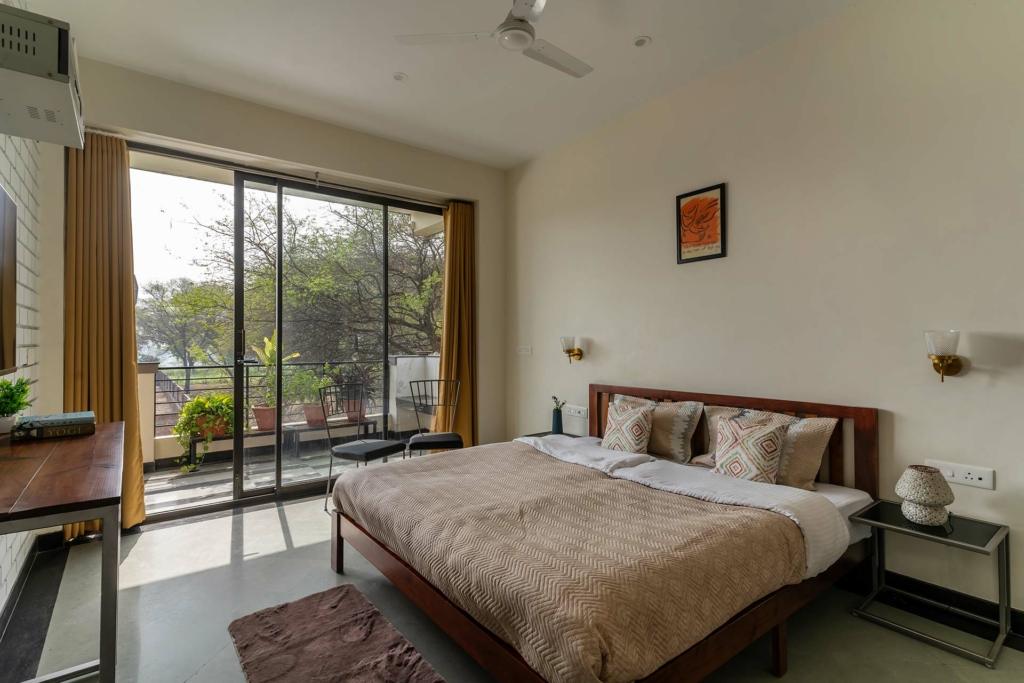
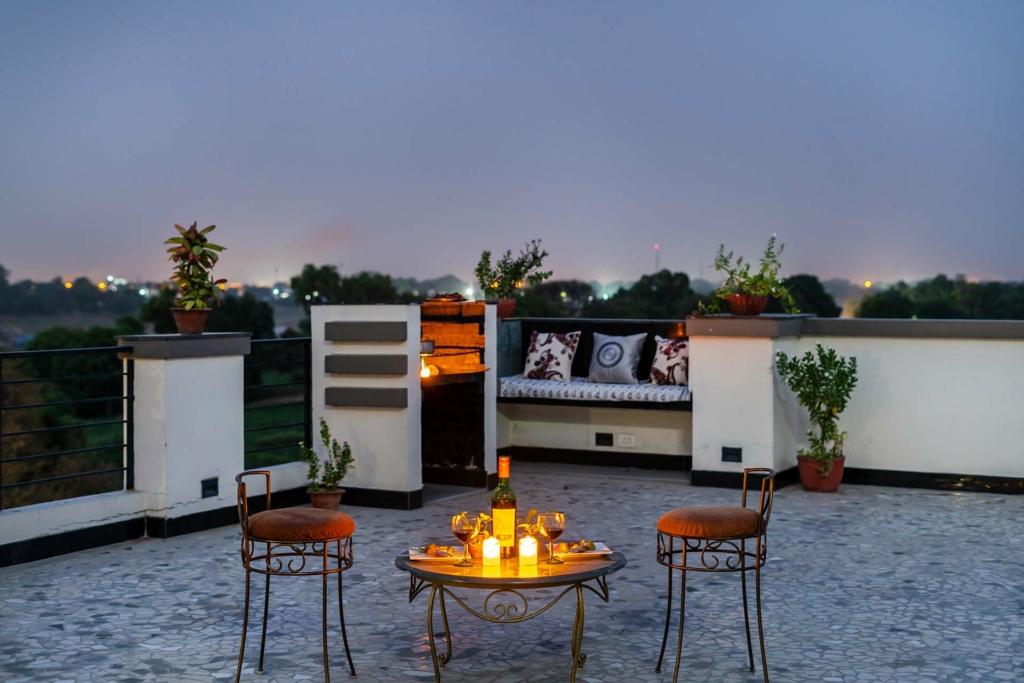
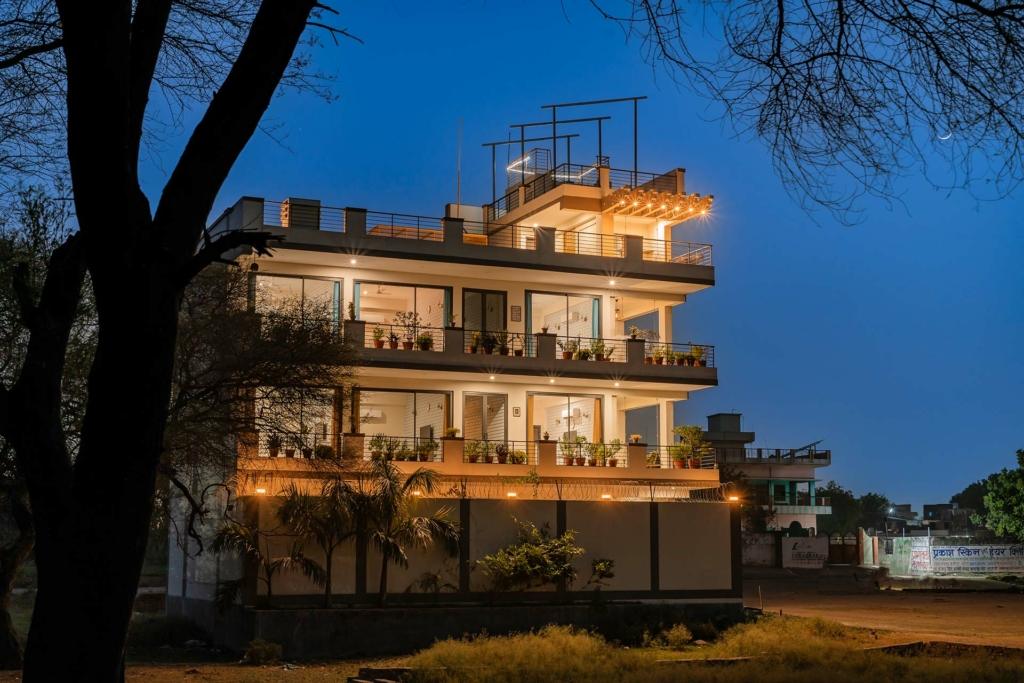
As its name suggests, Serenity is set in a secluded garden estate overlooking the Ganges. The six-bedroom villa has minimalist modern interiors with warm, rustic touches and multiple verandas. Its lush lawn and river-facing terrace give a blissfully tranquil vibe. Guests enjoy that quiet, green setting after the city’s bustle. It also has comfortable indoor living rooms and balconies with river and garden views. Serenity sits a few kilometers from Assi Ghat and the Sankata Mochan temple (both about 3 mi away), making it convenient to walk down for the Chhath prayers at dawn.
Vintage Varanasi by the Ganges

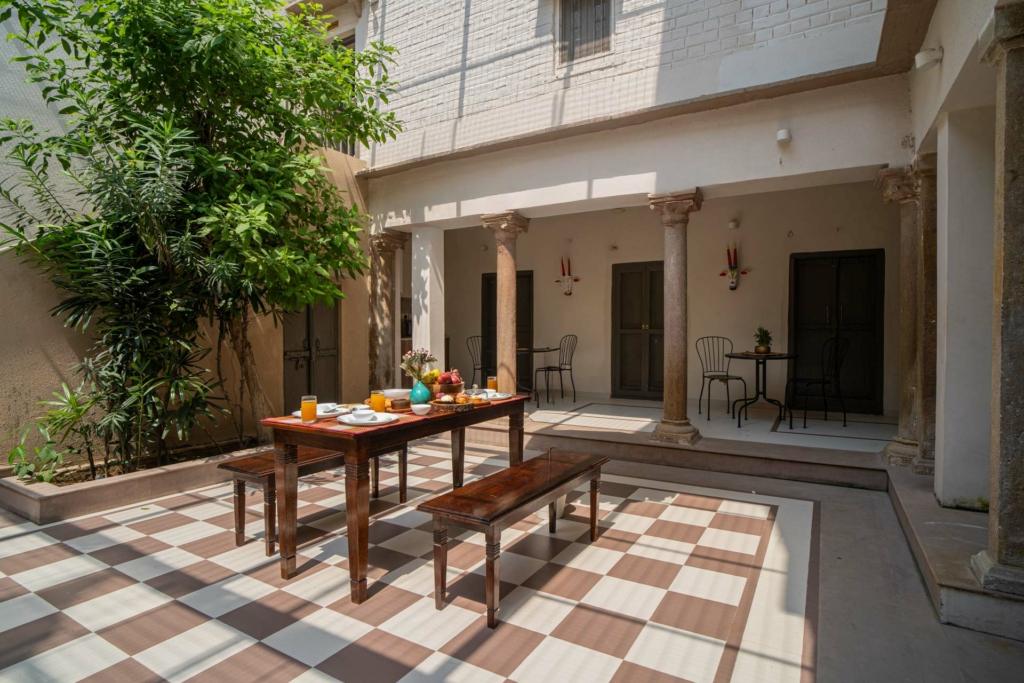
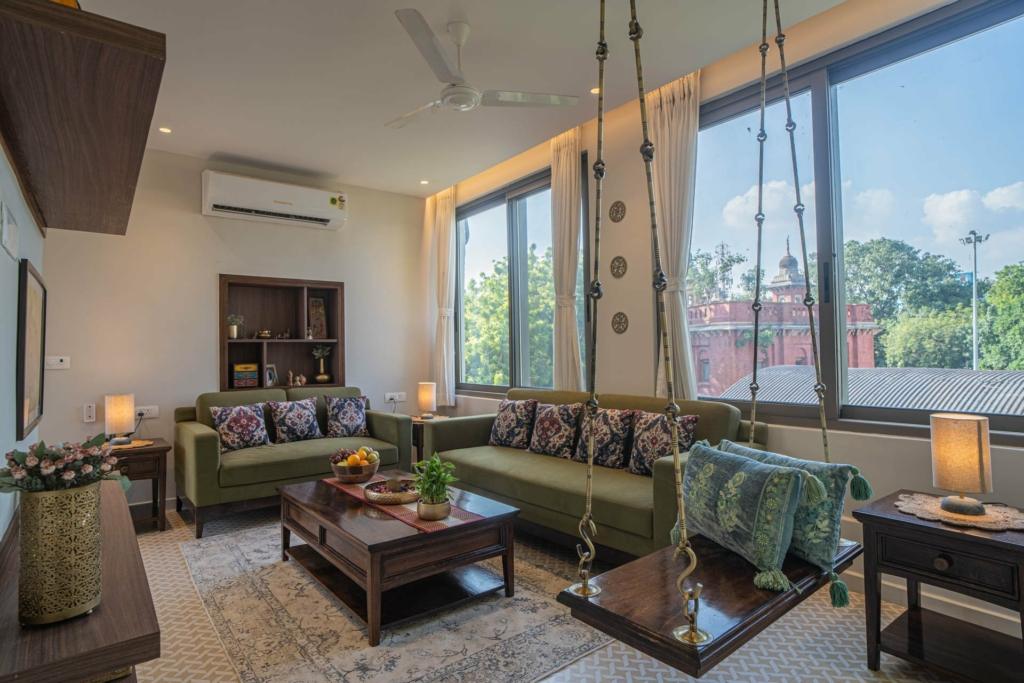
This four-bedroom villa blends heritage charm with riverfront living. Elegant, heritage-inspired decor gives it an understated grandeur a,,nd large windows/rooms face the Ganges. It’s tucked on a quiet lane in Shivala, so you get the energy of the ghats without being in the crowded centre. Its riverside spot means easy morning access to the sun-rise pujas, and guests love that the villa balances peaceful old-world style with sweeping river views.
Conclusion
Experiencing Chhath Puja 2025 is an opportunity to witness one of India’s most profound cultural rituals in its native setting. Bihar’s ghats and Varanasi’s riverfront offer a blend of spirituality, color, and community solidarity during these four days of Sun worship. Whether you choose the bustling riverbanks of Patna, the serene Falgu ghats of Gaya, the enthusiastic gatherings in Bhagalpur or Muzaffarpur, or the timeless city of Varanasi, you’ll find each place has its own flavor of devotion. Guided by this overview—complete with travel tips and local highlights—visitors can plan a Chhath Puja trip that combines sacred ritual with exploration of rich cultural and historical sights.
Banner Image Credit: Sudhakar Chandra via Unsplash



